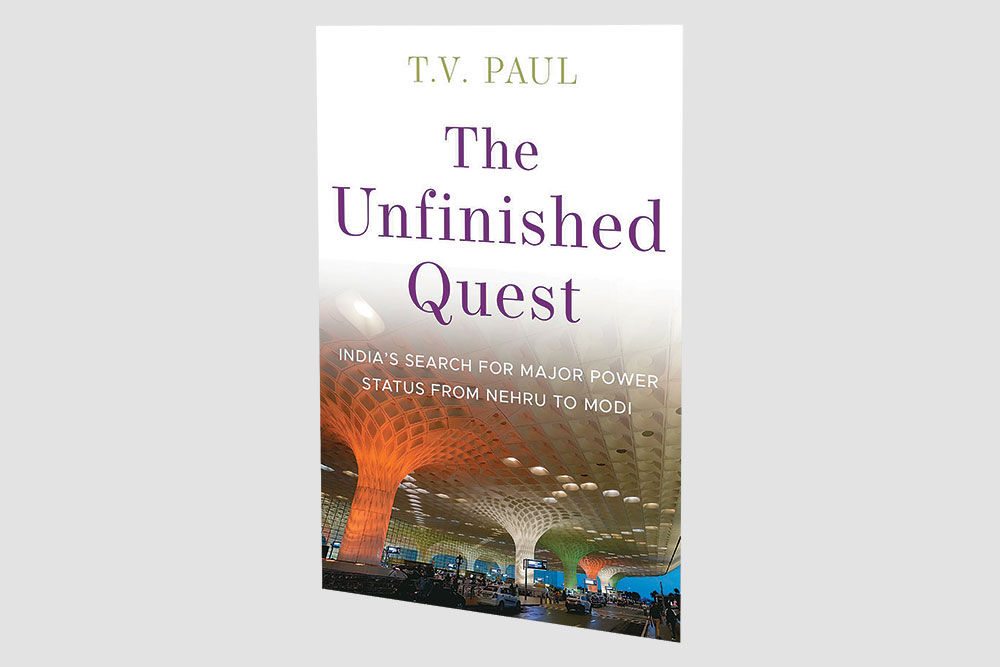The Human Development Index (HDI) of the United Nations Development Program (UNDP) in 2022 ranked India as 132 out of 191 states, a marginal decline from the previous year’s rank of 131. Although there are many problems with indices of this nature, inclusive development has been a major challenge for India in achieving its desired global status and influence. India’s status quest has been hampered by the continued prevalence of a weak state with a highly uneven socioeconomic development of the population, even though it has achieved many milestones of progress in its 76-year history since it began in 1947 as a free state. The second resurgence of Covid-19 in April 2021 showed the weaknesses and fragility of the state in India when it comes to providing basic healthcare and other public services that are taken for granted in a modern state. According to the World Health Organization (WHO) report, some 4.7 million people—nearly 10 times higher than Indian government’s estimates—might have died from the pandemic through December 2021.
For a period of time, the state, both in New Delhi and in the constituent states, was helpless before the extraordinary onslaught of the pandemic. There were few preparations, and as a result, scores of thousands of Indians in cities like Delhi died without hospital beds and essential oxygen, creating a heart-wrenching scene that played out for several weeks. International media showed the burning of corpses on pyres and makeshift arrangements for the sick and the dead and some bodies even washed up on riverbanks such as the Ganges. The Modi government attempted to deflect criticism by projecting a positive image on social media, but international media and some daring Indian outlets covered the tragedy that was profoundly afflicting India’s population as well as its status aspirations. Part of the problem was that the Modi government had prematurely declared conquest of the virus and offered vaccines and medicines to the rest of the world. The crisis showed that whatever economic growth had occurred in India since the liberalization started in 1991, it could easily be upset, as millions who had entered the lower middle class had fallen below the poverty level once again.
The consolation for India was that it was not alone in this difficult phase of a truly global pandemic crisis. In fact, Donald Trump’s America, with one of the most advanced economies and medical care systems, held the second known cumulative casualty figure, followed by Brazil, another country often compared to India as an aspirational rising power. The crisis indeed dented the status and reputation of all these states, including established and rising powers. Even Western countries such as the United Kingdom, France, Germany, and Italy faced immense challenges in dealing with the pandemic crisis. Interestingly, countries that have already achieved higher international status tend not to lose their status ranking that easily. It is much harder for an aspiring power if it is afflicted by weak state syndrome not to be affected disproportionately in terms of international perceptions and reputation. The Indian state has a reputation of being a reactive state, and it did fairly well in the third wave of the pandemic in January–March 2022. To the state’s credit, more preparations were made to avert the catastrophe as witnessed in the second upsurge in 2021. Since then, economic recovery has been slowly happening, although it is not clear how rapidly employment rates for India’s youth and rural populations can be increased.
Despite the fact that India has achieved many milestones in development since independence, there is great unevenness in this process. For instance, in February 2019, The Economist carried a satellite photo of India in terms of electrification of the entire country. Most revealing was the inequality in the availability of electricity, a crude but significant indicator of the uneven development of India. Although in June 2018 Prime Minister Modi announced that India had electrified 100 percent of its villages, anyone living in India confronts power cutoff in many cities in the sweltering heat. Indian’s electric transmission lines are often the most archaic, and power loss and theft are very common. Similarly, continuous supply of clean water to India’s large urban population is still a dream. In several rural areas, women and children walk miles to collect drinking water for daily use. For three months during the monsoon season, India is often flooded due to incessant rains, and the swollen rivers eject water to the Arabian Sea and Bay of Bengal, with little water conservation efforts made other than through some big dams spread around the country’s main river systems. In the urban areas, water supply has improved, but in rural areas, India has far to go. In this regard, China has achieved much more success in offering continuous water supply, while most Indian cities have limited hours of service.
Although India’s public highways have made improvement over the years, inadequately built and maintained Indian roads—and a considerable dearth of them in rural areas—are representative of a country with poor infrastructure development despite huge investments in recent times. The challenges are more noticeable in some parts of the vast country than in others.
***

Bookmarked
Take a look at what’s new in the business section of Amazon’s bookshelf
Dance of the Elephant, Walk of the Dragon
Sandeep Hasurkar
Published: May 2024
While examining the policies, institutions and infrastructure of the two global economic powers, India and China, the book offers a synoptic look at their respective constructs of modern nation state to better understand the future trajectories of both the countries.
What Went Wrong With Capitalism
Ruchir Sharma
Published: June 2024
Sharma offers a radical examination of the flaws of capitalism and a series of seven fixes to restore the balance between state support and free markets, laying the path to a more prosperous and happier future.
Crypto the Disruptor
Mukesh Jindal
Published: March 2024
The book analyses the movement of the world economic system from a centralised entity to a decentralised one, emphasising the role of digital technology like cryptocurrency in the transformation of the financial system.
The Republic Relearnt
Radha Kumar
Published: May 2024
Despite the clear danger of the rise of totalitarianism in India today, this book aims to look forward to the moment when democracy will be revitalised in the country and explores the lessons from past experiences to anchor it more firmly when the opportunity arises.











 Just one email a week
Just one email a week